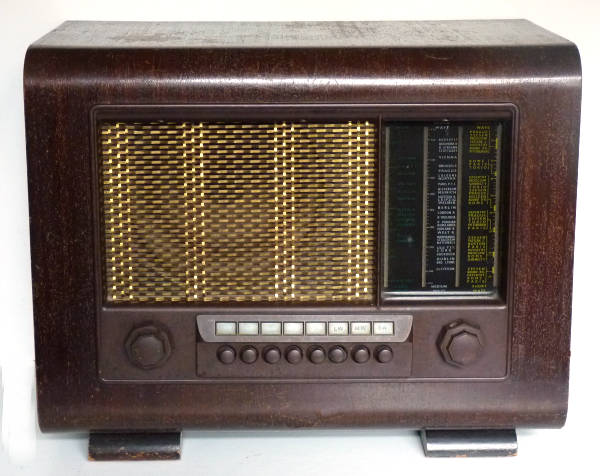
Serial number 112918
Chassis number 07740

Marconiphone model 882. This is one of a range of electrically identical radios first manufactured in 1939. It was given to me by Mr and Mrs Miller and was collected by their teenage son some thirty years ago, it reportedly functioned well when last used. The Marconiphone 882 and HMV 1104 are table receivers. The Marconiphone 884 and HMV 1301 are console receivers and the Marconiphone 885 and HMV 11501 and 1601 are radiograms. All are 4-valve (plus valve rectifier), 3 waveband superhet with pre-set tuning for five stations. The table and console models, which are identical except for the cabinets, are for 195-255 V, 50-100 Hz mains. The radiograms are only suitable for 50Hz supplies.
Valve lineup: X65 triode hexode, KTW61 RF tetrode,DH63 double-diode triode,KT61 output tetrode and U50 full wave rectifier.
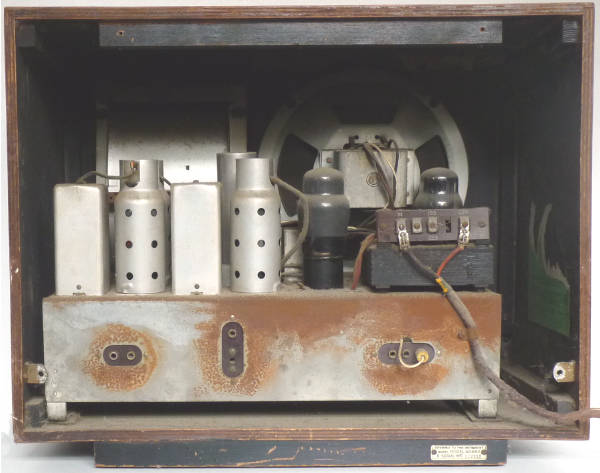
When I removed the back cover it seemed as if everything was in order and the mains cable appeared to be OK so I energised the set via my series lamp arrangement and nothing untoward happened. There was no hum but there were clicks from the speaker when the pushbuttons were operated. An aerial did not elicit any response even when touched on the valve top caps.
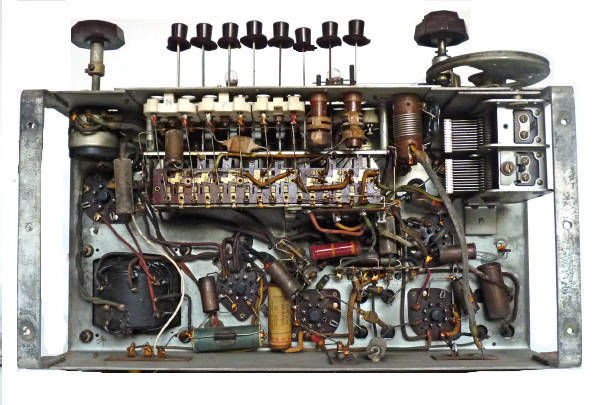
The chassis and loudspeaker were removed from the case and many years of dust were brushed and vacuumed away. The valves were removed one by one and the pins and valve holders treated with contact cleaner. The push button switches were given the same treatment. As far as I can tell all the components appear to be original, the valves too, all have Marconi labels, two dial lamps were absent but the other three were fine. Capacitors including the main smoothing Electrolytic were manufactured by Plessey of Ilford. I believe that the whole of the set would have been made by Plessey under contract to Marconi and the chassis number is a Plessey identifier.
Plessey produced radios and television sets for a number of other manufacturers. They also made their own components including loudspeakers, capacitors, Yaxley switches under licence and were able to offer mass production facilities to others at a competitive rate. By 1939 the firm had 5000 employees and was also making telephone equipment.
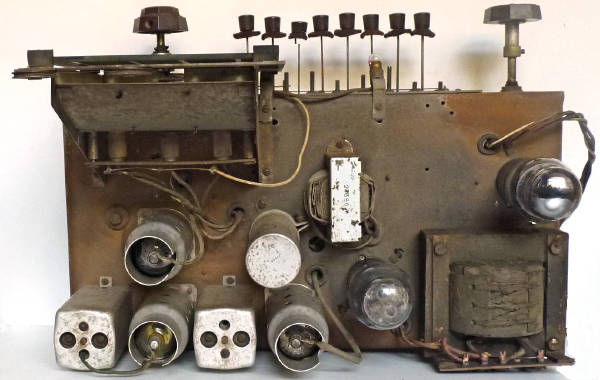
The radio is currently working on all three wavebands, though perhaps not as well as the day it was made. I have checked the alignment and after very slight adjustments the sensitivity has improved and after tuning the presets so that stations can be selected on the pushbuttons the chassis was returned to its cabinet.
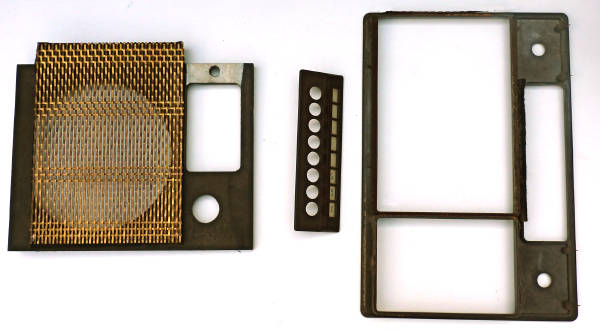
The speaker fret and cabinet have been cleaned and the few woodworm holes treated. The Bakelite speaker and dial surround have been cleaned and polished, (Note that this surround is held in place by three wood screws and a not very obvious panel pin on the left hand side of the speaker)

